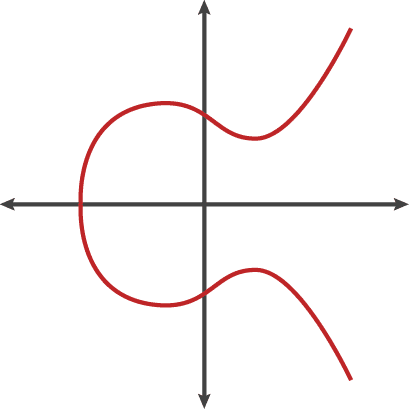elliptic-curve
Elliptic Curve Cryptography (ECC) is a widely used cryptographic framework to create secure digital signatures and keys. ECC provides smaller key sizes than other cryptographic systems like RSA, offering the same level of security with better efficiency. Elliptic curves are defined by equations of the form:
1. Elliptic Curve Digital Signature Algorithm

Elliptic curve shape
ECDSA is a cryptographic scheme for creating and verifying digital signatures based on ECC. It consists of three main operations: key generation, signature generation, and signature verification.
Key generation
Signature verification
2. Edwards-curve Digital Signature Algorithm

Edwards curve shape
The Edwards-curve Digital Signature Algorithm (EdDSA) is a variant of the Schnorr signature scheme that utilizes elliptic curves in Edwards form. EdDSA has several advantages, including faster computations, better resistance to side-channel attacks, and smaller signature sizes. Elliptic curves in Edwards form are defined by the equation:
According to this equation, the neutral element is (0, 1), and the negative of a point (x, y) is (-x, y).
The Edwards-curve Digital Signature Algorithm (EdDSA) is a Schnorr signature scheme using Edwards curves. Implementations such as Ed25519, Ed448, and BabyJubJub provide efficient and secure digital signatures with compact key sizes.